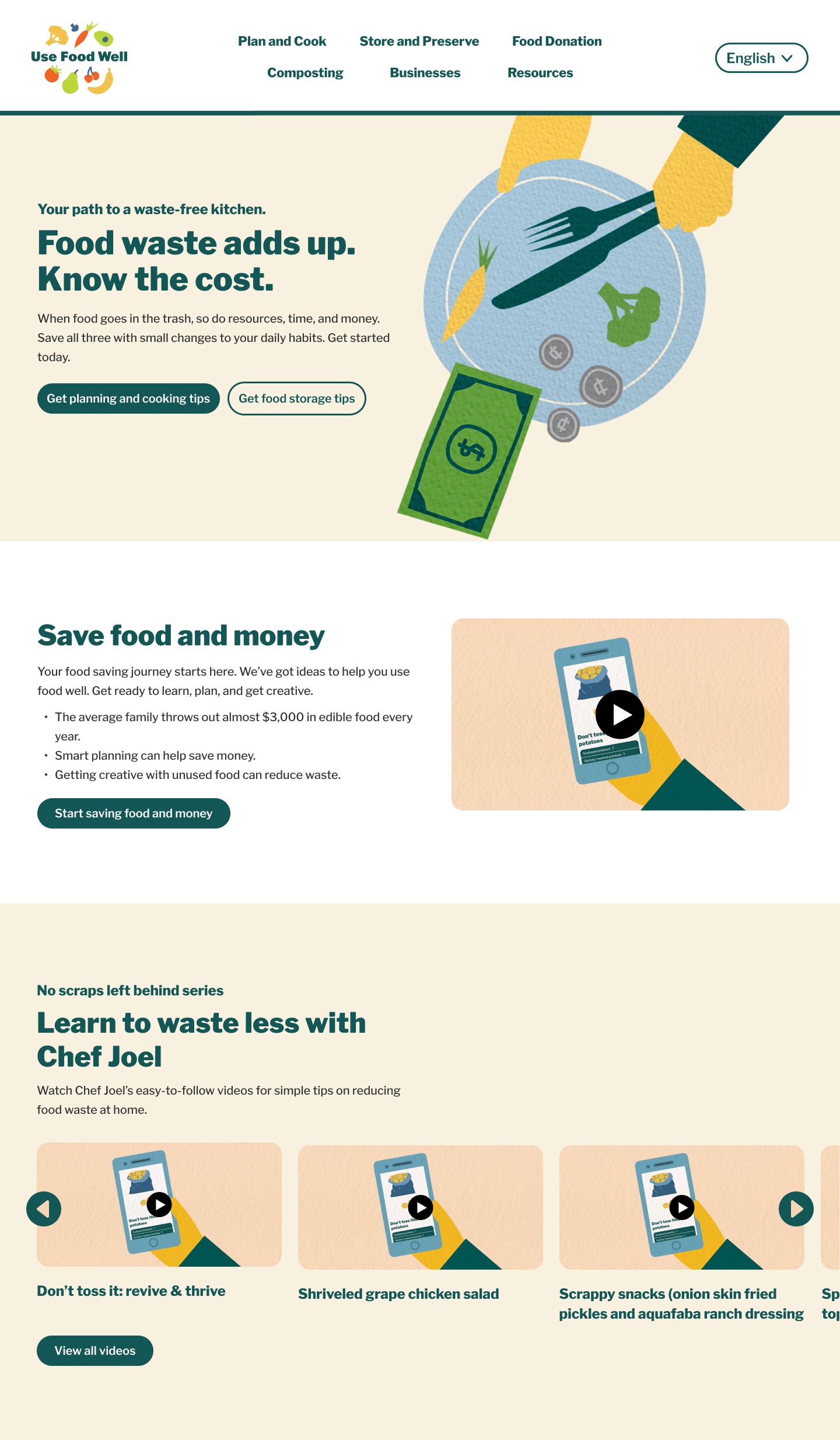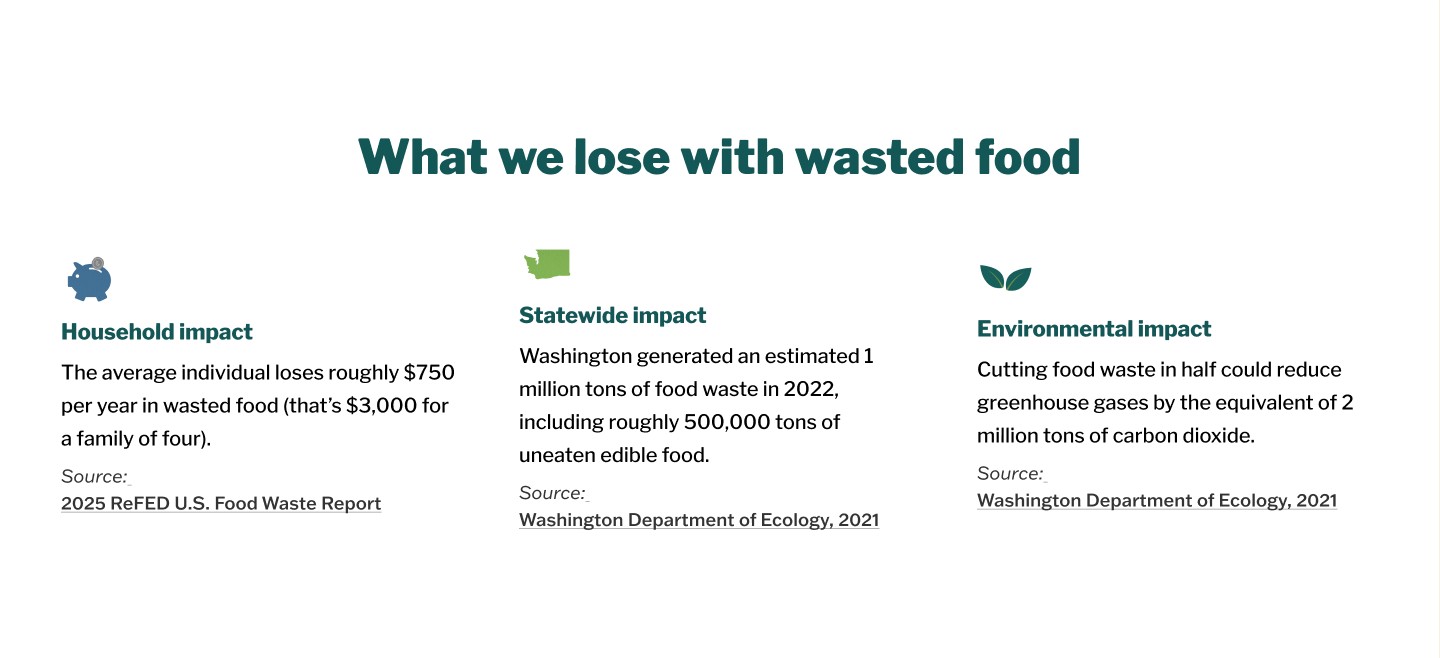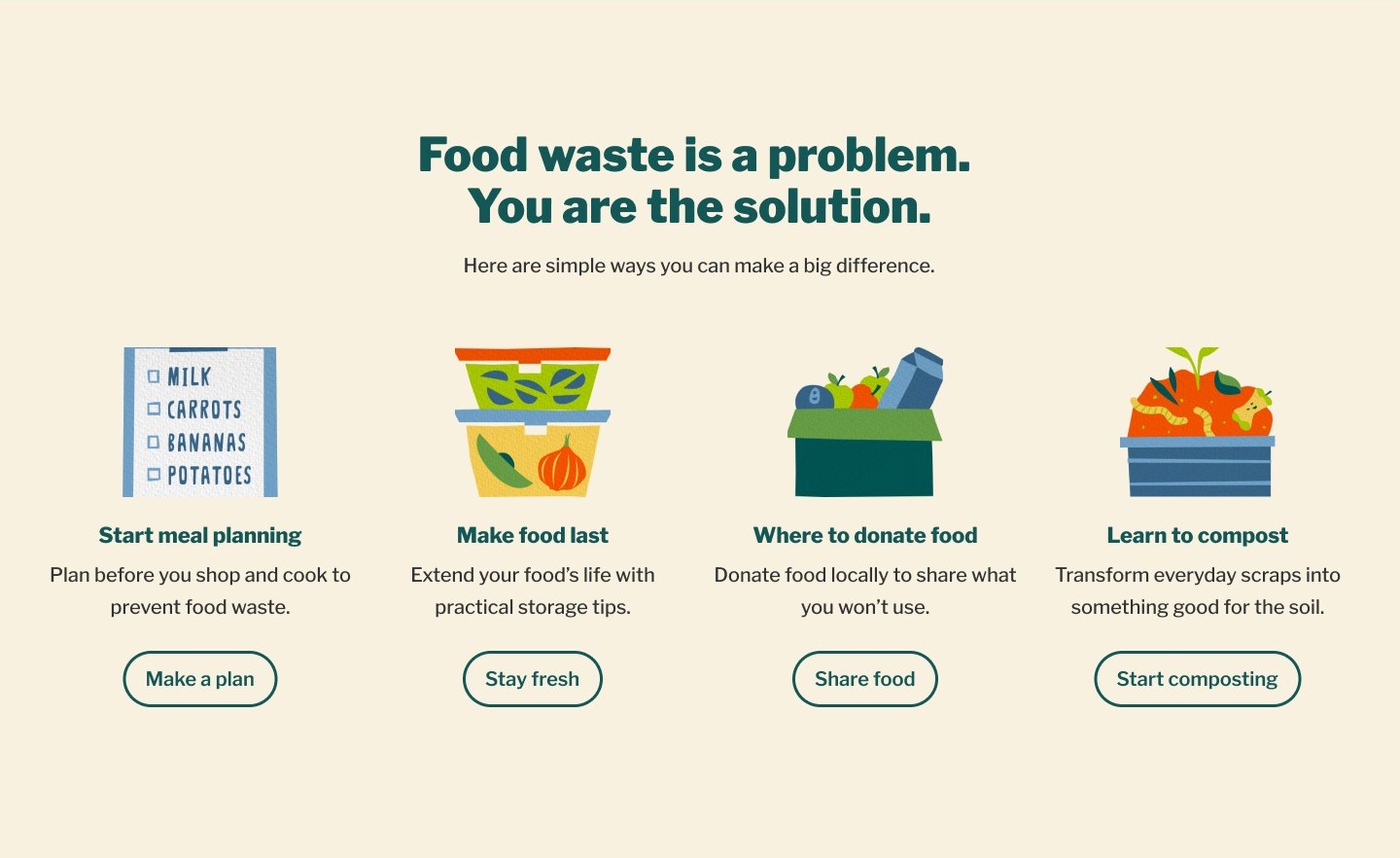Use Food Well
Use Food Well is a Washington State Department of Ecology initiative focused on reducing food waste and providing residents with practical tools like shopping tips, composting guides, and leftover recipes. I redesigned the website to improve engagement and accessibility by restructuring content and repurposing components within budget and development constraints, and the project went on to win Best of Show and a Silver Anvil Award from PRSA.
Project Overview
The Challenge
The Use Food Well website was underperforming. Users spent only a few seconds on the site before dropping off, which meant they were missing critical information about food waste reduction. My challenge was to redesign the experience to increase engagement and accessibility while working within budget constraints and collaborating with a third-party development team with limited capabilities.
The Process
Discovery
In the discovery phase, I reviewed analytics, the client brief, and the existing site structure to uncover pain points and define KPIs. On the homepage, I identified two key issues: unclear calls-to-action that left users without direction, and critical content about saving food and money hidden within a video. These findings shaped my redesign strategy to prioritize clarity, scannability, and accessible pathways for users.
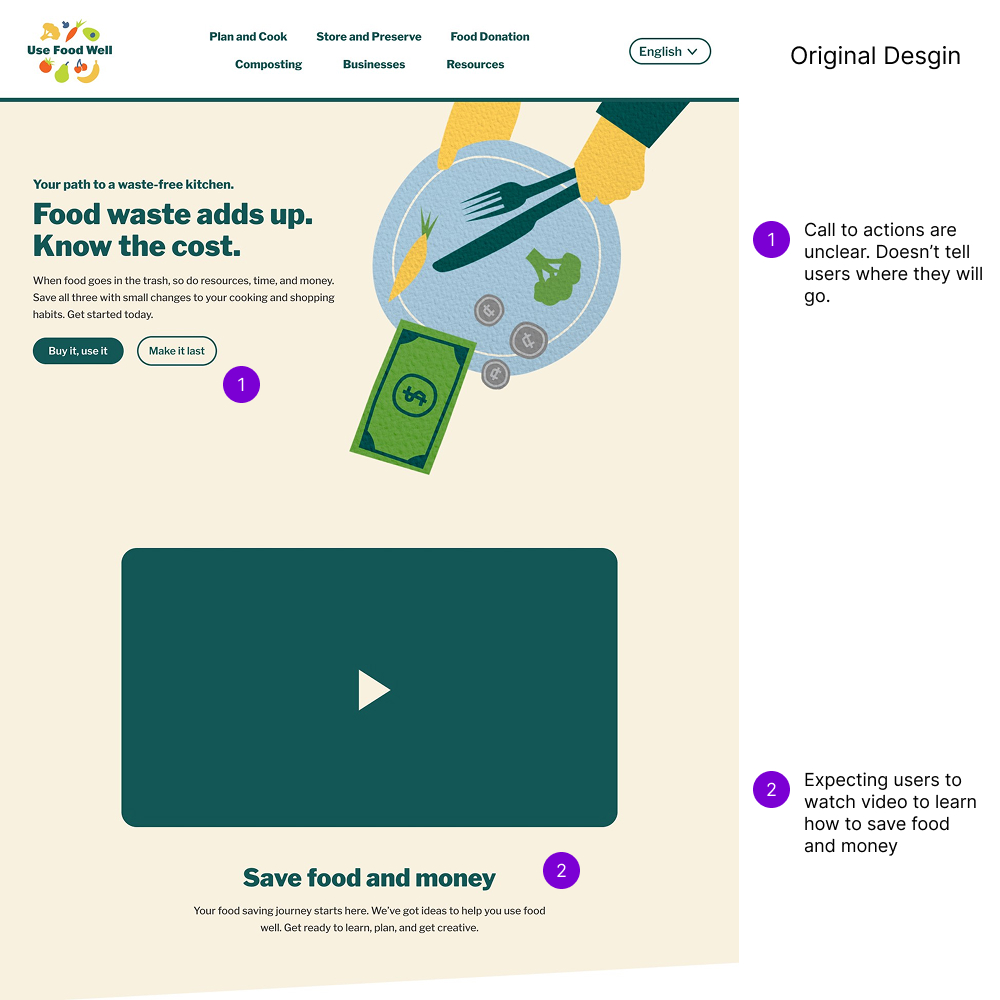
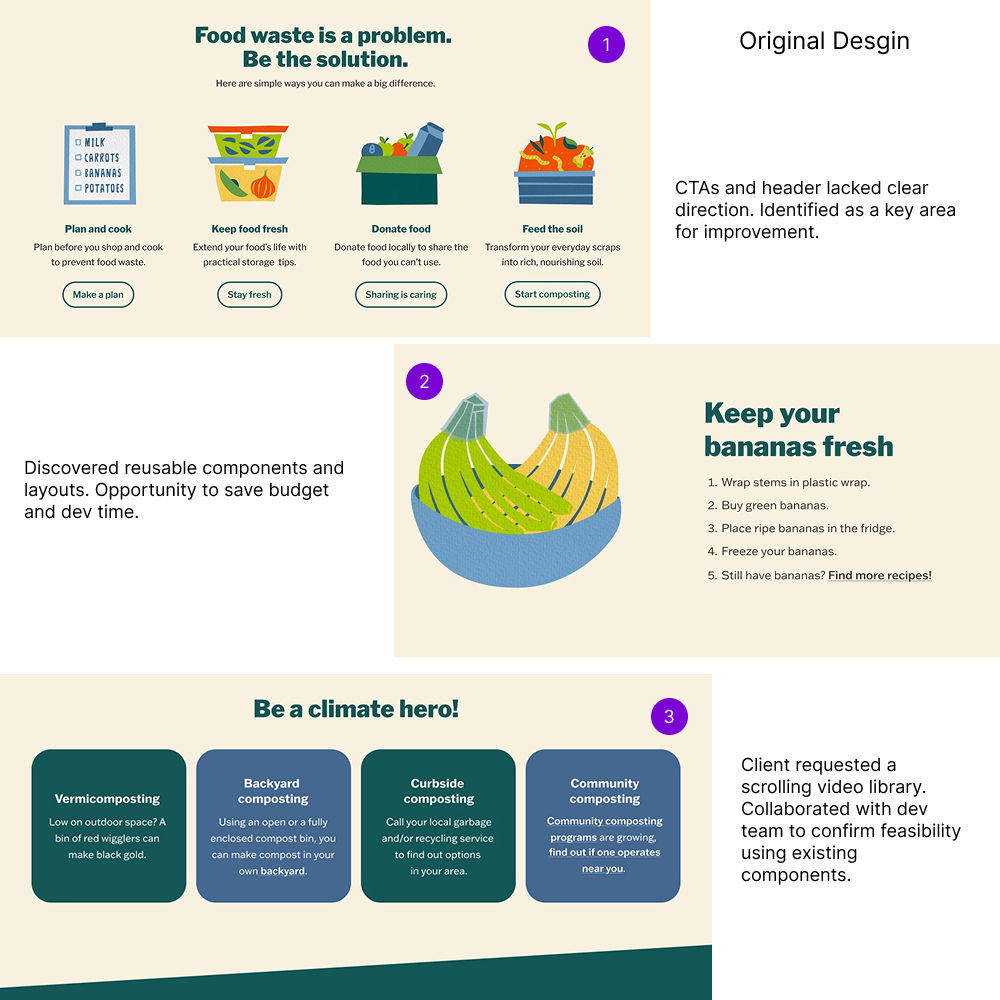
Design
After aligning with the development team to understand technical parameters, I began designing in Figma. Instead of reinventing every element, I repurposed existing components and restructured them into clearer, more intuitive layouts. This approach not only respected budget and time constraints but also directly addressed user pain points by making calls-to-action more visible and surfacing key information that had previously been buried in video. The result was a streamlined process for the client and development team, and a design that gave users a more accessible and engaging experience.
Delivery
In the delivery phase, my role was to support a smooth handoff and ensure the final product stayed true to the design intent. After QA/QC reviews, I worked with the developers and client to confirm fixes were implemented and that the site met accessibility and usability goals. The site launched successfully, providing users with a clearer and more engaging experience around food waste reduction.

The Solution
The redesigned site transformed a confusing, high-bounce experience into a clear and engaging platform. By restructuring the layout, repurposing existing components, and prioritizing accessibility, the site now guides users through practical steps for reducing food waste. Resources like shopping tips, composting guides, and leftover recipes are easier to find and use, helping the Department of Ecology connect with residents in a meaningful way.
The Outcome
The redesigned site launched successfully with improved structure and usability, making it easier for Washington residents to access food waste resources within a limited budget. For me, the project reinforced the importance of repurposing existing components and collaborating effectively with teams working under tight parameters. Even without a full rebuild, thoughtful restructuring produced results that were just as impactful. The project also received external recognition, winning two PRSA awards: Best of Show and the Silver Anvil Award.
